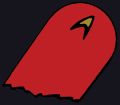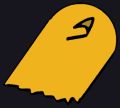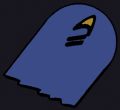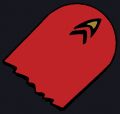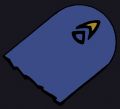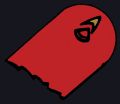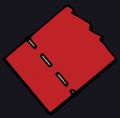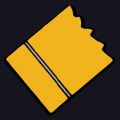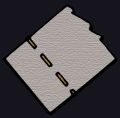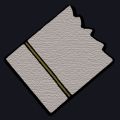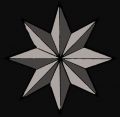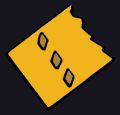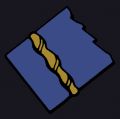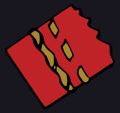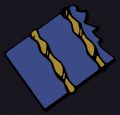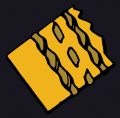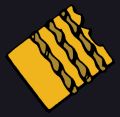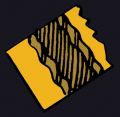Difference between revisions of "Star Fleet Ranks (FASA)"
| Line 3: | Line 3: | ||
===Recruit=== | ===Recruit=== | ||
| + | Recruits could enter [[Star Fleet Command|Star Fleet]] at the age of 18 (or age 17 if their first assignment was to a colony world or other non-ship posting). Recruits underwent extensive training and orientation in Star Fleet and [[United Federation of Planets (FASA)|Federation]] life for 18 months at induction centers located on various worlds. They would then receive six months of specialized training appropriate to each individual's potential and cultural background. In the early 2300s, the insignia for a Recruit was a plain, one-piece white uniform design with no decoration except for a standard [[combadge|communicator]].<ref name="FASA2012"/> | ||
<gallery> | <gallery> | ||
File:starfleet_ranks_e1-fasa2001a.jpg|200px|thumb|left|Recruit (c.2200) ([[Star Trek: The Role Playing Game (FASA-2001)|FASA2001A]]) | File:starfleet_ranks_e1-fasa2001a.jpg|200px|thumb|left|Recruit (c.2200) ([[Star Trek: The Role Playing Game (FASA-2001)|FASA2001A]]) | ||
</gallery> | </gallery> | ||
| − | ===Enlisted | + | ===Specialist 2nd Class=== |
| + | Second Class Specialists, known as Enlisted Second Class in the early 2200s,<ref name="FASA2001A"/> were individuals who had demonstrated leadership and technical competence in a given area of operations. "Spec Twos" could command four to ten junior Specialists, depending on individual duty assignments. In the early 2300s, the insignia for Specialist Second Class was one hollow brass diamond worn on each uniform wrist cuff.<ref name="FASA2012"/><ref group="Notes" name="PO1"/> | ||
<gallery> | <gallery> | ||
File:starfleet_ranks_e2-fasa2001a.jpg|200px|thumb|left|Enlisted 2nd Class (c.2200) ([[Star Trek: The Role Playing Game (FASA-2001)|FASA2001A]]) | File:starfleet_ranks_e2-fasa2001a.jpg|200px|thumb|left|Enlisted 2nd Class (c.2200) ([[Star Trek: The Role Playing Game (FASA-2001)|FASA2001A]]) | ||
| + | File:starfleet_ranks_e2-fasa2012.jpg|200px|thumb|left|Specialist 2nd Class (c.2300) ([[Star Trek: The Next Generation Officer's Manual (FASA-2012)|FASA2012]]) | ||
</gallery> | </gallery> | ||
| − | ===Enlisted | + | ====Specialist 1st Class==== |
| + | Specialist First Class, known as Enlisted First Class in the early 2200s,<ref name="FASA2001A"/> were enlisted personnel whose competence and leadership were sufficient to permit them independent control of junior Specialists without direct supervision by officers. In the early 2300s, the insignia for Specialist First Class was one solid brass diamond worn on each uniform wrist cuff.<ref name="FASA2012"/><ref group="Notes" name="PO1"/> | ||
<gallery> | <gallery> | ||
File:starfleet_ranks_e3-fasa2001a.jpg|200px|thumb|left|Enlisted 1st Class (c.2200) ([[Star Trek: The Role Playing Game (FASA-2001)|FASA2001A]]) | File:starfleet_ranks_e3-fasa2001a.jpg|200px|thumb|left|Enlisted 1st Class (c.2200) ([[Star Trek: The Role Playing Game (FASA-2001)|FASA2001A]]) | ||
| + | File:starfleet_ranks_e3-fasa2012.jpg|200px|thumb|left|Specialist 1st Class (c.2300) ([[Star Trek: The Next Generation Officer's Manual (FASA-2012)|FASA2012]]) | ||
</gallery> | </gallery> | ||
| − | ===Petty Officer | + | ====Chief Specialist==== |
| + | Chief Specialists, known as Petty Officer Second Class in the early 2200s,<ref name="FASA2001A"/> had advanced technical and administrative skills and could command large groups of enlisted personnel without officers' supervision for extended periods of time. In the early 2300s, the insignia for Chief Specialist was one hollow and one solid brass diamond worn on each uniform wrist cuff.<ref name="FASA2012"/><ref group="Notes" name="PO1"/> | ||
<gallery> | <gallery> | ||
File:starfleet_ranks_e4-fasa2001a.jpg|200px|thumb|left|Petty Officer 2nd Class (c.2200) ([[Star Trek: The Role Playing Game (FASA-2001)|FASA2001A]]) | File:starfleet_ranks_e4-fasa2001a.jpg|200px|thumb|left|Petty Officer 2nd Class (c.2200) ([[Star Trek: The Role Playing Game (FASA-2001)|FASA2001A]]) | ||
| + | File:starfleet_ranks_e4-fasa2012.jpg|200px|thumb|left|Chief Specialist (c.2300) ([[Star Trek: The Next Generation Officer's Manual (FASA-2012)|FASA2012]]) | ||
</gallery> | </gallery> | ||
| − | ===Petty Officer | + | ===Petty Officer=== |
| + | The rank of Petty Officer, known as Petty Officer First Class in the early 2200s,<ref name="FASA2001A"/> was given to non-commissioned officers who had shown exceptional leadership in their own areas. A Petty Officer typically commanded a group of enlisted personnel, often independent of direct supervision by junior officer grades.<ref name="FASA2012"/> In the early 2300s, the insignia for Petty Officer was one hollow brass circle worn on the right uniform lapel.<ref group="Notes" name="PO1"/> | ||
<gallery> | <gallery> | ||
File:starfleet_ranks_e5-fasa2001a.jpg|200px|thumb|left|Petty Officer 1st Class (c.2200) ([[Star Trek: The Role Playing Game (FASA-2001)|FASA2001A]]) | File:starfleet_ranks_e5-fasa2001a.jpg|200px|thumb|left|Petty Officer 1st Class (c.2200) ([[Star Trek: The Role Playing Game (FASA-2001)|FASA2001A]]) | ||
| + | File:starfleet_ranks_e5-fasa2012.jpg|200px|thumb|left|Petty Officer (c.2300) ([[Star Trek: The Next Generation Officer's Manual (FASA-2012)|FASA2012]]) | ||
</gallery> | </gallery> | ||
===Chief Petty Officer=== | ===Chief Petty Officer=== | ||
| + | The rank of Chief Petty Officer was given to non-commissioned officers who had shown exceptional leadership in their own areas. A Chief Petty Officer typically commanded a group of enlisted personnel, often independent of direct supervision by junior officer grades. In the early 2300s, the insignia for Chief Petty Officer was one hollow gold circle worn on the right uniform lapel.<ref name="FASA2012"/><ref group="Notes" name="PO1"/> | ||
<gallery> | <gallery> | ||
File:starfleet_ranks_e6-fasa2001a.jpg|200px|thumb|left|Chief Petty Officer (c.2200) ([[Star Trek: The Role Playing Game (FASA-2001)|FASA2001A]]) | File:starfleet_ranks_e6-fasa2001a.jpg|200px|thumb|left|Chief Petty Officer (c.2200) ([[Star Trek: The Role Playing Game (FASA-2001)|FASA2001A]]) | ||
| + | File:starfleet_ranks_e6-fasa2012.jpg|200px|thumb|left|Chief Petty Officer (c.2300) ([[Star Trek: The Next Generation Officer's Manual (FASA-2012)|FASA2012]]) | ||
</gallery> | </gallery> | ||
===Senior Chief Petty Officer=== | ===Senior Chief Petty Officer=== | ||
| + | The rank of Senior Chief Petty Officer was given to non-commissioned officers who had shown exceptional leadership in their own areas. A Senior Chief Petty Officer typically commanded a group of enlisted personnel, often independent of direct supervision by junior officer grades. In the early 2300s, the insignia for Senior Chief Petty Officer was two hollow gold circles worn on the right uniform lapel.<ref name="FASA2012"/><ref group="Notes" name="PO1"/> | ||
<gallery> | <gallery> | ||
File:starfleet_ranks_e7-fasa2001a.jpg|200px|thumb|left|Senior Chief Petty Officer (c.2200) ([[Star Trek: The Role Playing Game (FASA-2001)|FASA2001A]]) | File:starfleet_ranks_e7-fasa2001a.jpg|200px|thumb|left|Senior Chief Petty Officer (c.2200) ([[Star Trek: The Role Playing Game (FASA-2001)|FASA2001A]]) | ||
| + | File:starfleet_ranks_e7-fasa2012.jpg|200px|thumb|left|Senior Chief Petty Officer (c.2300) ([[Star Trek: The Next Generation Officer's Manual (FASA-2012)|FASA2012]]) | ||
</gallery> | </gallery> | ||
===Master Chief Petty Officer=== | ===Master Chief Petty Officer=== | ||
| + | The rank of Master Chief Petty Officer was given to non-commissioned officers who had shown exceptional leadership in their own areas. A Master Chief Petty Officer typically commanded a group of enlisted personnel, often independent of direct supervision by junior officer grades. In the early 2300s, the insignia for Master Chief Petty Officer was three hollow gold circles worn on the right uniform lapel.<ref name="FASA2012"/><ref group="Notes" name="PO1"/> | ||
<gallery> | <gallery> | ||
File:starfleet_ranks_e8-fasa2001a.jpg|200px|thumb|left|Master Chief Petty Officer (c.2200) ([[Star Trek: The Role Playing Game (FASA-2001)|FASA2001A]]) | File:starfleet_ranks_e8-fasa2001a.jpg|200px|thumb|left|Master Chief Petty Officer (c.2200) ([[Star Trek: The Role Playing Game (FASA-2001)|FASA2001A]]) | ||
| + | File:starfleet_ranks_e8-fasa2012.jpg|200px|thumb|left|Master Chief Petty Officer (c.2300) ([[Star Trek: The Next Generation Officer's Manual (FASA-2012)|FASA2012]]) | ||
</gallery> | </gallery> | ||
| Line 127: | Line 142: | ||
File:starfleet_ranks_o8-fasa2001a.jpg|200px|thumb|left|Admiral (c.2200) ([[Star Trek: The Role Playing Game (FASA-2001)|FASA2001A]]) | File:starfleet_ranks_o8-fasa2001a.jpg|200px|thumb|left|Admiral (c.2200) ([[Star Trek: The Role Playing Game (FASA-2001)|FASA2001A]]) | ||
</gallery> | </gallery> | ||
| + | |||
| + | {|style="width:100%;" | ||
| + | |+class="HeaderRow"|Notes | ||
| + | |- | ||
| + | |<references group="Notes"> | ||
| + | <ref name="PO1">"[[Star Trek: The Next Generation Officer's Manual (FASA-2012)|''Star Trek: The Next Generation'' Officer's Manual]]" describes the rank insignia for for Petty Officer, Petty Officer First Class, and Chief Petty Officer being one through three hollow gold circles, respectively. This has been modified to better correspond with the ranks of Petty Officer, Chief Petty Officer, Senior Chief Petty Officer, and Master Chief Petty Officer. Although outside the scope of this entry, this also explains Chief Petty Officer Miles O'Brien wearing a single hollow rank pip in later seasons of ''[[Star Trek: The Next Generation]].'' Further, the rank of Specialist has been eliminated, which also lines the 24th century enlisted rank structure more closely to that of the 23rd century Star Fleet.</ref> | ||
| + | </references> | ||
| + | |} | ||
{|style="width:100%;" | {|style="width:100%;" | ||
| Line 133: | Line 156: | ||
|<references> | |<references> | ||
<ref name="FASA2001A">[[McLimore, Guy W. Jr.]], [[Poehlein, Greg K.]], and [[Tepool, David F.]] "[[Core Game Book (FASA-2001A)|Core Game Book]]." ''[[Star Trek: The Role Playing Game (FASA)|Star Trek: The Role Playing Game]],'' Book 2001A. [[FASA Corporation]], 1983.</ref> | <ref name="FASA2001A">[[McLimore, Guy W. Jr.]], [[Poehlein, Greg K.]], and [[Tepool, David F.]] "[[Core Game Book (FASA-2001A)|Core Game Book]]." ''[[Star Trek: The Role Playing Game (FASA)|Star Trek: The Role Playing Game]],'' Book 2001A. [[FASA Corporation]], 1983.</ref> | ||
| + | <ref name="FASA2012">[[Stuart, Rick]] and [[Terra, John]]. "[[Star Trek: The Next Generation Officer's Manual (FASA-2012)|''Star Trek: The Next Generation'' Officer's Manual]]." ''[[Star Trek: The Role Playing Game (FASA)|Star Trek: The Role Playing Game]],'' Supplement 2012. [[FASA Corporation]], 1988.</ref> | ||
</references> | </references> | ||
|} | |} | ||
Revision as of 09:50, 29 January 2019
Enlisted
In the early 2200s, assignment insignia was located on both sleeves, 3cm below the shoulder seam. Rank stripes and insignia were black, and were 0.5cm wide. The distance between assignment and rank insignia was 3cm.[1]
Recruit
Recruits could enter Star Fleet at the age of 18 (or age 17 if their first assignment was to a colony world or other non-ship posting). Recruits underwent extensive training and orientation in Star Fleet and Federation life for 18 months at induction centers located on various worlds. They would then receive six months of specialized training appropriate to each individual's potential and cultural background. In the early 2300s, the insignia for a Recruit was a plain, one-piece white uniform design with no decoration except for a standard communicator.[2]
Recruit (c.2200) (FASA2001A)
Specialist 2nd Class
Second Class Specialists, known as Enlisted Second Class in the early 2200s,[1] were individuals who had demonstrated leadership and technical competence in a given area of operations. "Spec Twos" could command four to ten junior Specialists, depending on individual duty assignments. In the early 2300s, the insignia for Specialist Second Class was one hollow brass diamond worn on each uniform wrist cuff.[2][Notes 1]
Specialist 1st Class
Specialist First Class, known as Enlisted First Class in the early 2200s,[1] were enlisted personnel whose competence and leadership were sufficient to permit them independent control of junior Specialists without direct supervision by officers. In the early 2300s, the insignia for Specialist First Class was one solid brass diamond worn on each uniform wrist cuff.[2][Notes 1]
Chief Specialist
Chief Specialists, known as Petty Officer Second Class in the early 2200s,[1] had advanced technical and administrative skills and could command large groups of enlisted personnel without officers' supervision for extended periods of time. In the early 2300s, the insignia for Chief Specialist was one hollow and one solid brass diamond worn on each uniform wrist cuff.[2][Notes 1]
Petty Officer
The rank of Petty Officer, known as Petty Officer First Class in the early 2200s,[1] was given to non-commissioned officers who had shown exceptional leadership in their own areas. A Petty Officer typically commanded a group of enlisted personnel, often independent of direct supervision by junior officer grades.[2] In the early 2300s, the insignia for Petty Officer was one hollow brass circle worn on the right uniform lapel.[Notes 1]
Chief Petty Officer
The rank of Chief Petty Officer was given to non-commissioned officers who had shown exceptional leadership in their own areas. A Chief Petty Officer typically commanded a group of enlisted personnel, often independent of direct supervision by junior officer grades. In the early 2300s, the insignia for Chief Petty Officer was one hollow gold circle worn on the right uniform lapel.[2][Notes 1]
Senior Chief Petty Officer
The rank of Senior Chief Petty Officer was given to non-commissioned officers who had shown exceptional leadership in their own areas. A Senior Chief Petty Officer typically commanded a group of enlisted personnel, often independent of direct supervision by junior officer grades. In the early 2300s, the insignia for Senior Chief Petty Officer was two hollow gold circles worn on the right uniform lapel.[2][Notes 1]
Master Chief Petty Officer
The rank of Master Chief Petty Officer was given to non-commissioned officers who had shown exceptional leadership in their own areas. A Master Chief Petty Officer typically commanded a group of enlisted personnel, often independent of direct supervision by junior officer grades. In the early 2300s, the insignia for Master Chief Petty Officer was three hollow gold circles worn on the right uniform lapel.[2][Notes 1]
Warrant Officers
In the early 2200s, stripes were 1cm wide, silver, and located 6cm from the cuff.[1]
Warrant Officer
Warrant Officer (c.2200) (FASA2001A)
Chief Warrant Officer
Chief Warrant Officer (c.2200) (FASA2001A)
Cadets
In the early 2200s, stripes were 1cm wide, gold, and located 6cm from the cuff.[1]
Cadet
Cadet (c.2200) (FASA2001A)
Midshipman
Officers
In the early 2200s, stripes were 2cm wide, gold, and located 6cm from the cuff.[1]
Ensign
Lieutenant, junior grade
Lieutenant
Lieutenant Commander
Commander
Captain
Fleet Captain
Fleet Captain (c.2300) (FASA2012)
Commodore
Admiral
Admiral (c.2200) (FASA2001A)
|
|
